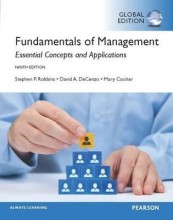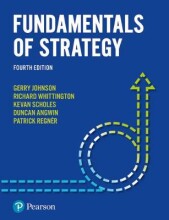Summary: Md2
- This + 400k other summaries
- A unique study and practice tool
- Never study anything twice again
- Get the grades you hope for
- 100% sure, 100% understanding
Read the summary and the most important questions on MD2
-
H14 - Energie metabolisme en thermoregulatie Ch21
This is a preview. There are 4 more flashcards available for chapter 14/09/2015
Show more cards here -
What are the 2 critical concepts that drive the control of energy metabolism?
- Because food intake is with intervals, the body must store nutrients during periods of intake and then break down these stores during periods between meals.
- Because the brain depends on glucose as its primary energy source, blood glucose levels must be maintained at all times, even between meals.
-
How can carbohydrates, lipids and proteins be converted into lipids?
Because they can all be catabolized into acetyl CoA, which is a substrate for triglyceride and cholesterol synthesis. -
There are a lot of the same intermediates for metabolic pathways. What determines the metabolic direction and in which 2 ways is this regulated?
The number and activity of the enzymes involved in the pathways determines the metabolic direction. These are regulated by- Changing their concentration though synthesis or degradation
- Changing the activity of individual enzyme molecules through allosteric or covalent regulation.
-
What tissues have special metabolic activities?
- Brain
- Skeletal muscle
- Liver
- Adipose tissue
-
What are the 3 possible fates of the main nutrients inside cells?
- Broken down to smaller molecules, releasing energy needed for driving processes such as muscle contraction, transport, secretion or anabolism.
- Used to synthesize other molecules needed by cells and tissues for normal function, growth and repair.
- Converted to energy storage molecules that provide energy during periods between meals (glycogen and triglyceride).
-
Why does the endocrine system regulate energy balance?
To ensure that a steady supply of small nutrients is always available to all body cells to meet their energy demand. -
When does the body mobilize its energy stores?
The body mobilizes its energy stores when the rate of energy intake is insufficient to meet its energy needs. -
What is energy input and what is a person's energy intake?
- Energy input: absorbed nutrients in the diet.
- Energy intake: total energy content of all the nutrients absorbed.
- Energy input: absorbed nutrients in the diet.
-
For what are the molecules that are absorbed for energy used?
- 60% of the energy in consumed nutrients goes to heat production, which is necessary to maintain body temperature.
- The remaining 40% is used to synthesize ATP, which is used to perform cellular work that can be divided into 3 categories:
- chemical work (formation of bonds e.g. during synthesis of large molecules from smaller ones)
- transport work - 60% of the energy in consumed nutrients goes to heat production, which is necessary to maintain body temperature.
-
What is the metabolic rate, what is the basal metabolic rate and how is this estimated?
- The metabolic rate is the amount of energy expended per unit time.
- The basal metabolic rate (BMR) is the metabolic rate when both the metabolic rate and the work performed are minimal. Expressed as the rate of energy expenditure per unit body weight.
- Estimated by oxygen consumption.
- The metabolic rate is the amount of energy expended per unit time.
- Higher grades + faster learning
- Never study anything twice
- 100% sure, 100% understanding































